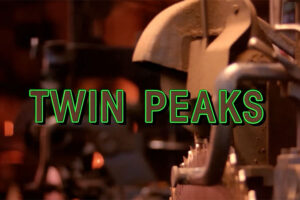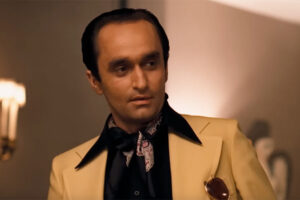
In the realm of cinema, there are actors who leave an indelible mark on the art form, forever altering its landscape. One such actor is Marlon Brando, widely regarded as the greatest actor of all time.
Brando’s magnetic presence, unmatched talent, and innovative methodology revolutionized acting, leaving an enduring legacy that continues to influence generations of actors. In this article, we will delve into what makes Brando’s acting so exceptional, explore his unique approach to the craft, and examine his profound impact on the acting world.
Born in 1924, Brando began studying acting as a teenager. He trained under Stella Adler, who taught him how to draw from personal experience and emotion to inhabit a character. This Stanislavski-inspired technique contrasted the prevailing grandiose style of acting at the time.
Naturalistic Approach, Authenticity and Emotional Intensity
Marlon Brando revolutionized film acting with his bold, raw, and intensely realistic portrayals that broke free from the stylized methods of his peers. He rejected the stylized, theatrical mannerisms of the era and instead sought to portray characters as real people.
Brando first captured attention on Broadway with his bristling and brutish performance as Stanley Kowalski in A Streetcar Named Desire. The role catapulted him to stardom and he brought this fiery, animalistic energy to his first major film role as the leather-clad biker Johnny Strabler in The Wild One.
His portrayal of dockworker Terry Malloy in On The Waterfront delivered his famous lines “I coulda been a contender” and fully established him as a sensitive and compelling screen actor. Brando reinvented himself again as the boorish yet charming outlaw cowboy in One-Eyed Jacks.
In “Apocalypse Now,” Brando’s portrayal of Colonel Kurtz showcased his mastery of his craft. His commitment to the character’s dark and mysterious nature resulted in a mesmerizing performance that defied convention. He immersed himself in the role, physically transforming his appearance and infusing the character with a haunting intensity.
However, it was his legendary role as Vito Corleone in The Godfather that stands as Brando’s masterpiece. He submerged himself in the character, adopting facial prosthetics, a raspy voice, and slow, deliberate body language to become the aging mob patriarch. Brando’s Vito Corleone set the standard for cinematic depictions of the Mafia and his performance remains one of the most iconic in movie history.
Pioneer of the Method Acting Technique
Brando sought to understand his characters from the inside out, meticulously researching their backgrounds, motivations, and circumstances. This dedication to psychological realism allowed him to create multidimensional characters who resonated deeply with audiences. By internalizing his roles, he shattered the boundaries between actor and character, making his performances profoundly genuine and powerful.
Brando approached acting not as pretending, but as “being.” He would exhaustively research his roles and articulate the unique psychology and motivations of each character. This commitment to finding emotional truth resulted in acting that felt organic, spontaneous, and full of surprises.
Influence on Future Generations
Marlon Brando’s impact on acting cannot be overstated. He was a fearless pioneer who opened the door to a generation of actors embracing vulnerability, complexity, and truth in their work.
Brando’s influence can be seen in the work of legendary actors such as Robert De Niro, Al Pacino, Meryl Streep, and Daniel Day-Lewis, who have all acknowledged his profound impact on their careers. His legacy lives on, shaping the craft of acting and encouraging actors to explore new boundaries and embrace the power of authenticity.
As a coach, I often refer to Brando’s performances when demonstrating important acting concepts to students:
Connecting to a character’s vulnerabilities – Brando never shies away from portraying damage, be it Terry Malloy’s crushed dreams or the Godfather’s regretful love for his wayward son.
Listening and reacting – Brando is a master of silent response, allowing scenes to unfold naturally through subtle facial reactions that invite the audience into the character’s inner world.
Physicality defining character – Brando’s body language, from Stanley Kowalski’s violent outbursts to the Godfather’s knowing stillness, externalizes unspoken layers of the character’s psyche.
Vocal choices creating character – Brando boldly experimented with accents, affectations, and vocal tics to build authentic vocal identities for his roles.
Generating spontaneity – Brando pursues moments of truth and surprise, keeping both scene partners and audiences riveted with his unpredictability.
Marlon Brando’s legacy is monumental and his impact on acting will resound for generations to come. He raised the bar for authenticity and vulnerability in an actor’s work, challenging the ideals of Hollywood’s Golden Age. His bold character choices and commitment to personalizing each role empowered actors to bring their full selves to their craft. Brando’s performances stand the test of time because he defied convention and uncovered the humanity within.
Though many gifted actors have emerged over the decades, Brando remains in a class of his own. No single actor has so thoroughly revolutionized screen acting or influenced contemporaries and successors so profoundly. Marlon Brando demonstrated the height of what is possible in portraying the human experience through performance. That raw power and depth is why, to this day, Brando is revered as the greatest actor of all time.










Leave a Reply